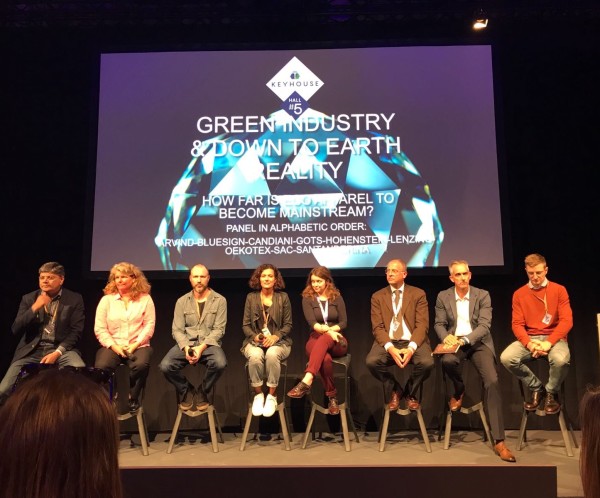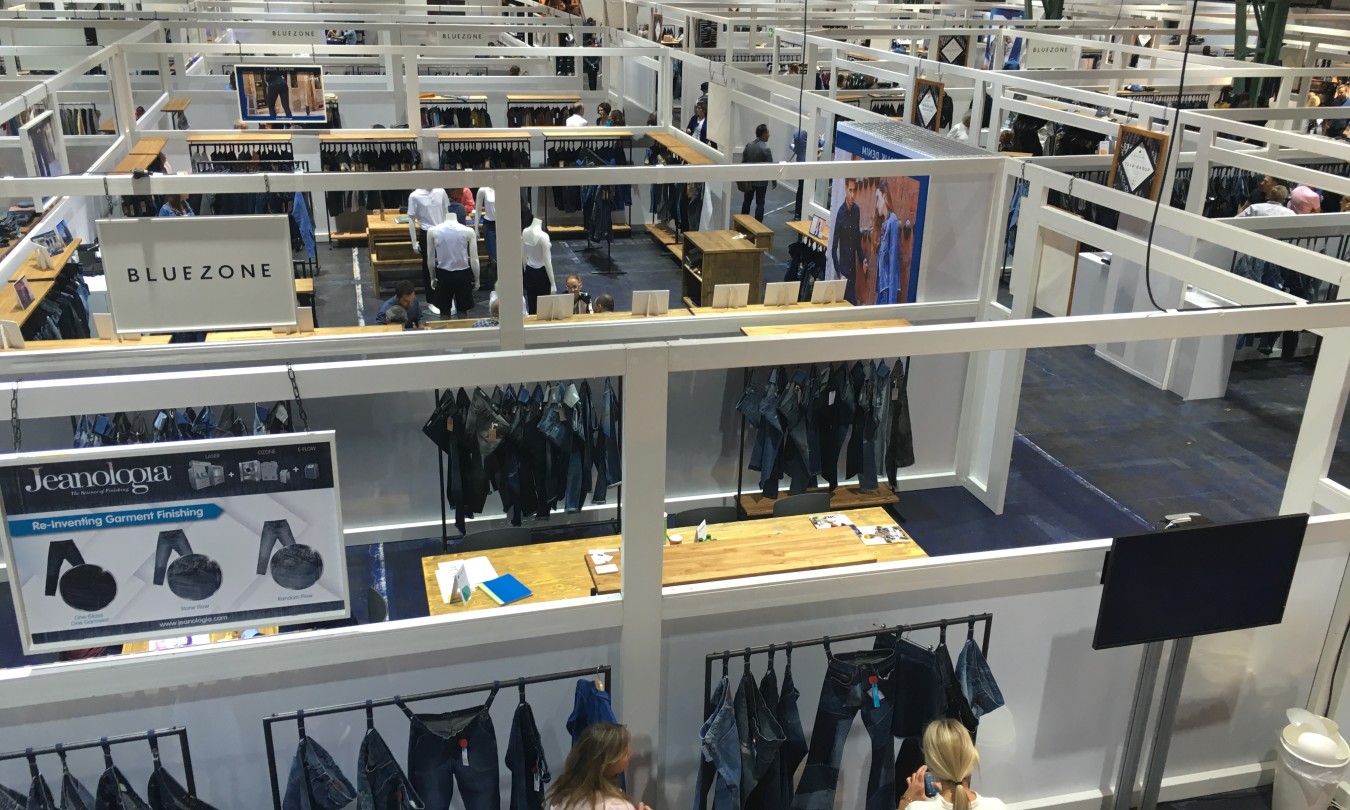
Dispatch from Bluezone
This year at Bluezone, the denim portion of the bi-annual Munich Fabric Start, held September 5-7, mills, fiber manufacturers and technology companies got back to work after their summer, sharing ideas about speedier yet environmentally responsible apparel production.
Fashion and sustainability has long been a core concept at Lenzing. Through its TENCEL® branded lyocell fibers, Lenzing has supported major global brands and retailers produce ecological, fashion-forward and high-comfort garments for their customers. The fiber maker provides key information about its raw materials, including forestry background. Lenzing also works with NGOs, provides certification for TENCEL® production, and works with the supply chain in the development of new fabrics and processes—all the while keeping the lines of communication open.
That is exactly the ethos on display at Bluezone, reports Tricia Carey, Lenzing’s Director of Global Business Development for Denim, while at the event’s Key House area. “There were new ideas around every corner,” she said. “The exquisite factory space is the perfect setting. How do we learn about new technology and collaborations? It is exactly through presentations like this. Progress won’t be in leaps, but it is in the small updates and changes that will move the industry forward.”

Lenzing was on hand for Denim Technovation: Powered by Technology and Science, a seminar led by Bluezone business manager Panos Sofianos, who chronicled the history of denim production through the years. Mills like Prosperity, Royo and Orta presented their new developments, all noting that the technology advancing sustainable manufacturing is at an evolution. Participants agreed that working together, being transparent, and taking small but steady steps in the right direction will yield results.
With clean water increasingly a pressing issue around the globe, water conservation is an especially looming issue for all phases of denim production. That begins with the heavy use in growing cotton but continues through the weaving and finishing phases. Laser and ozone technologies offer water savings, prominently aided by efforts like Jeanologia’s “EIM” (Environmental Impact Measuring) software, which was developed for laundries and garment finishers that want to build more sustainable processes. Naveena Mills’ Allydro-plus allows dyeing and distressing with up to 92 percent less water use, 30 percent less energy use, and 87 percent less cotton waste.
Dealing with waste is another key topic. LPJ Studios is actively collecting garments for high-end up-cycling to design and product hand-crafted, one-of-a-kind rugs, blankets and other goods. Similarly, Royo’s “Soldiers of Nature” collection, (part of a sustainability project that has already reduced 500,000 cubic meters of water, 33 tons of contaminants, 510 tons of emissions, and 1526 MWh of energy in the last three years), uses post-consumer waste as a raw material, diverting high-quality denim from landfills and incineration to produce recycled stretch denim.
There was a clear sense from the many presentations and seminars that technology is making real progress possible—beyond marketing and hype—to enable truly innovative ways to achieve sustainable practices from fiber to fabric. In many aspects, old ideas, paired with new technologies, create innovative paths. Technical textiles now accounts for a third of the turnover in the textile industry, according to the German Association for Textiles and Fashion, with high-tech fibers and weaves the strongest drivers. “Smart” textiles and wearables hold the greatest potential, according to that organization.
Muchaneta Kapfunde, founding editor of FashNerd.com, gave a keynote address on smart fabrics. “Essentially what happened to the mobile telephone in the last 15 years will happen to textiles in the next 15,” she wrote in the event magazine.
There were many examples to be found in the Keyhouse. Together, silver and polyamide, for example, create a strong, lightweight, elastic yarn with antimicrobial, anti-fungal and thermal properties, among others; market leader Statex notes that such fibers are conductive for use in fashion-tech products. Orta is infusing its textiles with minerals that promote muscle wellness and comfort. And Lenzing, Santoni, Tonello and Unitin debuted DEN/IM 2.0, an athleisure collection made with indigo yarns using TENCEL® fibers on seamless knitting machines and finished with sustainable laundry techniques..
It was made clear at Bluezone that the mandate for sustainable production is global and season-less. “You cannot leave this show without some new piece of information,” Carey said.






